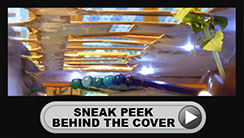
If you own a pet but are concerned about its health, chances are you will take it to a vet, who is specialised in treating animals. If, like in humans, the illness is a routine one, then your pet should be able to receive a standard treatment and recover fairly quickly.
However, in the same way that human illnesses are not always so easy to diagnose or can sometimes resist treatment, animals may also experience a number of symptoms that make it difficult for a vet to diagnose or treat the condition. These can include:
- Acute neck and back pain (lumbago)
- Signs of pain when performing certain movements
- Undefined lameness
- Difficulties to get up
- Irregularity of gait
- Irregular wear of nails or shoes
- Hypersensitivity to touch
- Disobedience when jumping
- Involuntary change of hand
- Chronic and acute problems of motion
In such cases, an alternative approach can be useful in the process of diagnosis. In Switzerland one such approach is now being provided by Regula Schrenk – the first veterinary chiropractor to practise in the French part of Switzerland.

A qualified veterinary surgeon since 1983, and running her own animal practice in Lausanne from 1990 to 2010, Regula became interested in the possibility of using chiropractic treatment on animals after receiving chiropractic treatment for her own dorsal problems 10 years ago. So impressed was she by the results of the treatment that she chose to study with the American IAVC International Academy of Veterinary Chiropractic in their German Compus and obtained her Certificate two years later. At the same time, she passed her exams at the IVCA International Veterinary Chiropractic Association to obtain her International Veterinary Chiropractic Certificate in April 2010. Since then she has continued to take further advanced courses in order to obtain the Advanced Certification.
Regula told knowitall.ch “I was so impressed by the results of the chiropractic treatment that I was administering to animals that I decided to set up a new practice in January 2011, called Chiromedvet, devoted entirely to the chiropractic treatment of pets and horses. In a very short time, I have seen how chiropractic care can be used not only to treat existing illnesses, but also how it can be used to prevent certain conditions developing within an animal, particular before it takes part in any physical exercise such as racing, jumping, and agility tests, etc.”
Describing the process of chriropractic treatment to us, she added, “Veterinary chiropractic care is a manual therapy, which re-establishes a joint dysfunction (of the spine or extremities) by a specific, precise adjustment of a low amplitude and high velocity, mainly acting on the articulations and the nervous system. During the treatment, the physiological barriers of the articulation are never exceeded. Before each chiropractic treatment, a thorough exam of the individual mobility of each articulation (spine and extremities) is also made, and in certain cases X-rays are required before treatment. In general, the treatment is painless.”

The treatment of an acute problem at Chiromedvet requires a minimum of 3 sessions, separated by intervals of 7 to 10 days. The treatment of chronic problems needs regular sessions over a longer period, depending on the pathology. All sessions take place at the animal’s own “home”.
When you book chiropractic treatment for your animal, the initial session includes a history, an in-depth analysis of the “locomotion apparatus”, a diagnosis and then treatment. This can typically take:
Horse: 1h15 min +/- 15 min
Dog: 45 min +/- 15 min
Cat: 30 min +/- 15 min
Subsequent sessions serve to consolidate the improvement process and to evaluate the results. The duration of the second and next sessions, treating the same pathology, is typically shorter.
Chiromedvet
Regula SCHRENK
Sentier de la Condémine 18
1804 CORSIER-sur-Vevey
www.chiromedvet.ch
021 922 23 33
This email address is being protected from spambots. You need JavaScript enabled to view it.









